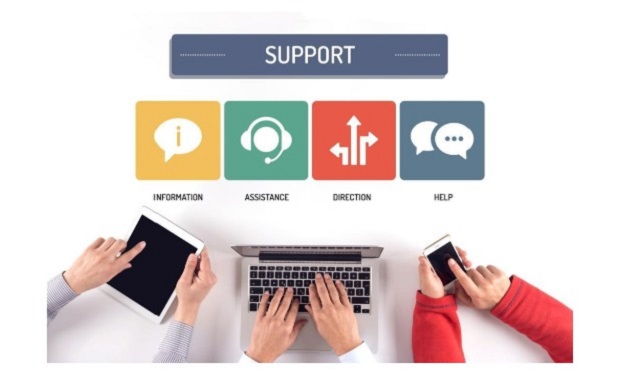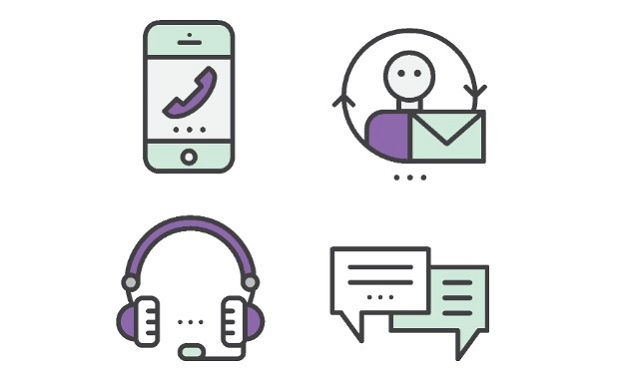Customer support can make or break a business. Customers who experience good support can become your most faithful fans, while customers who receive a poor experience can become your worst enemies.
All it takes is an angry tweet or article becoming popular to push other customers away. However, customer support goes beyond a simple “good” or “bad” rating. It needs to be consistent, easily available, and fast. Salesforce reports that 75% of consumers expect a consistent experience wherever they go—website, social media, in person, etc.
At the end of the day, it all boils down to providing customer satisfaction, which, in turn, translates to higher customer retention and sales. Internet Retailer reported that companies with the strongest omnichannel customer engagement strategies retain an average of 89% of their customers. In this post, we’ll go over different ways to step up your customer support to add more value to your eCommerce store and set it apart from the competition.
Anticipate Questions, Lower Your Customer Support Load
The worst way to keep your support personnel busy is with questions that can be easily answered in an FAQ section or knowledge base portal. Simple questions like the following can be avoided:
# Do you provide free shipping?
# What’s your return policy?
# What is this product made out of?
They will take valuable customer service time away from questions that may not be able to be answered on your website.
All commonly asked questions can be answered in the following ways:
1. FAQ section. I like to place my FAQ section below each product description to make sure customers read them, regardless of where they are on the site.
2. Emails. Send automated emails after a customer’s first purchase to educate him or her about general things like your return policy.
3. Detailed product descriptions. Make sure to include basic information, such as materials, washing instructions, and fit. It will not only decrease your customer support inquiries but also help you increase conversions.
4. Knowledge base/support portal. This is the ideal place to collect all important or frequent questions about your business.
Offer Multiple Ways to Provide Support
Offering a support number is not enough. If you want to stay ahead of the competition, you need to be everywhere your customers are. Therefore, you should start with a multichannel approach. From there, you can step it up a notch to follow an omnichannel strategy. The difference is that, with an omnichannel strategy, you create a seamless customer experience in every channel.
Whether a customer reaches out for support using social media, your website, or by phone, he or she would be able to get the same support experience. Here are some of the ways you can offer multichannel support:
Offer Multiple Ways to Provide Support
Offering a support number is not enough. If you want to stay ahead of the competition, you need to be everywhere your customers are. Therefore, you should start with a multichannel approach. From there, you can step it up a notch to follow an omnichannel strategy. The difference is that, with an omnichannel strategy, you create a seamless customer experience in every channel.
Whether a customer reaches out for support using social media, your website, or by phone, he or she would be able to get the same support experience. Here are some of the ways you can offer multichannel support:
Classic Live Chat. It offers a fast and convenient way for customers to reach support.
Facebook Messenger Live Support. This is an upgraded version of the classic live chat widget. It will allow you to provide bot support by setting automated bot messages on your Facebook account—and it’s free!
Phone Support. When all other resources have been exhausted, a phone line is the answer. If you have limited staff, try offering a call-back service, where you get the customer’s phone number and you give them a call back. It can allow you to manage your time better and reduce customer wait time.
Smart Email Support. Set up a smart ticket support system that will allow management to keep track of all tickets. On top of that, set up an initial automated response to be sent out every time a customer requests support. That way, even if you can’t answer right away, your customers will know their requests have been received.
Get Customer Feedback

The best way to know if your efforts are actually working is to ask for feedback from your customers. Again, this is where automation can be set in place to keep a consistent stream of feedback requests.
Every time a problem is solved, the customer should get an email requesting feedback about his or her experience. This feedback can help you optimize your support system and make it stronger.
To increase your feedback rate, try offering a discount code to incentivize customers to take action. You’ll end up more useful feedback and more repeat purchases. It’s a win-win situation for everyone.
Respond to Negative Feedback
This is a tough one. No one likes to confront bad reviews, but sometimes it’s necessary. If bad reviews are left unanswered, it can make other customers feel like their opinions don’t matter, or that the company may not be there if something goes wrong.
Also, if the customer with a bad experience doesn’t get a response, he or she might spread the bad word around to his or her friends and relatives. So, instead of having one unhappy customer, it turns into a handful of angry never-to-be customers.
Most customers who leave bad reviews just want to know that their voice is heard. Thus, a simple apology can go a long way. To ensure your staff knows how to answer to the toughest feedback, create a template and educate them on business communication.
They shouldn’t use the template word for word, so the answers will feel genuine, but it will provide guidance on how to tackle a situation. See below some for general guidelines to deal with bad feedback:
Stay away from pointing fingers. Instead of saying “You did x,” state the event without assigning blame. For instance, instead of “You ordered the wrong size,” you can say “The wrong size was ordered.” It’s a subtle difference, but it helps relieve tension.
Always apologize for the bad experience. The customer is never wrong. Apologize for the bad experience (even if it was, technically, the customer’s fault).
Sympathize with the customer’s situation. Right after I apologize for the bad experience, I like to add how “I understand how x situation may have made you feel.” It makes the customer feel like he or she is not alone.
Now, over to you. What has been your experience with customer reviews? Have you tried any of the tactics in this post? Comment below!


